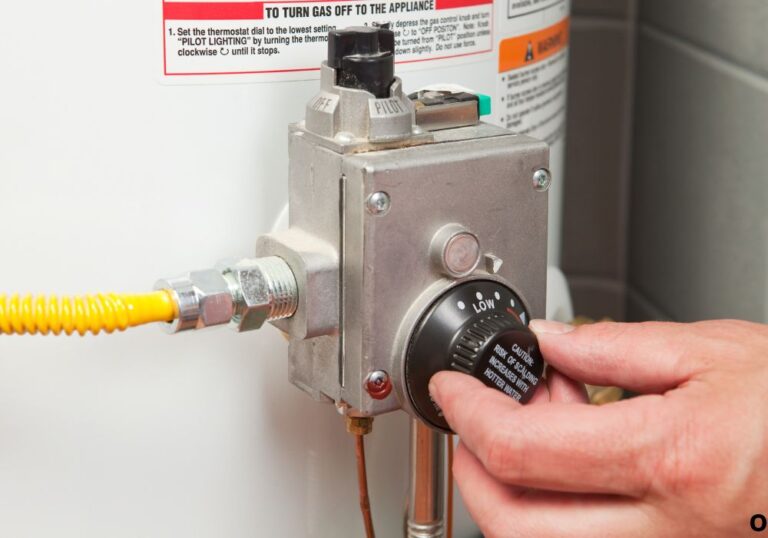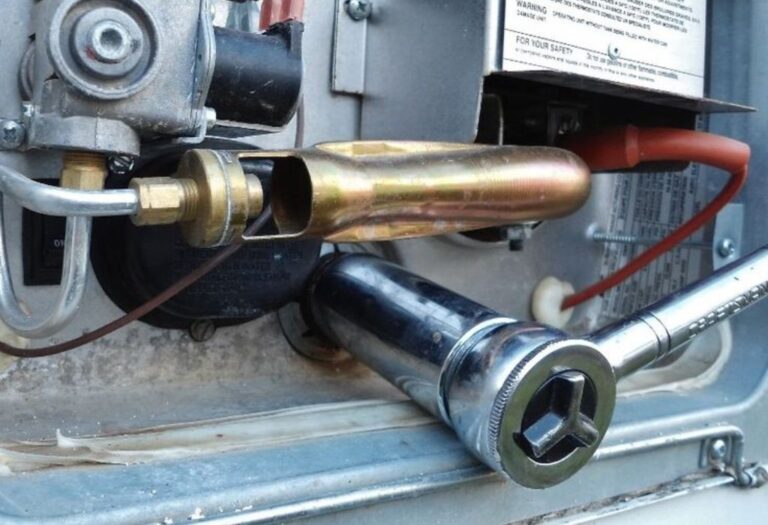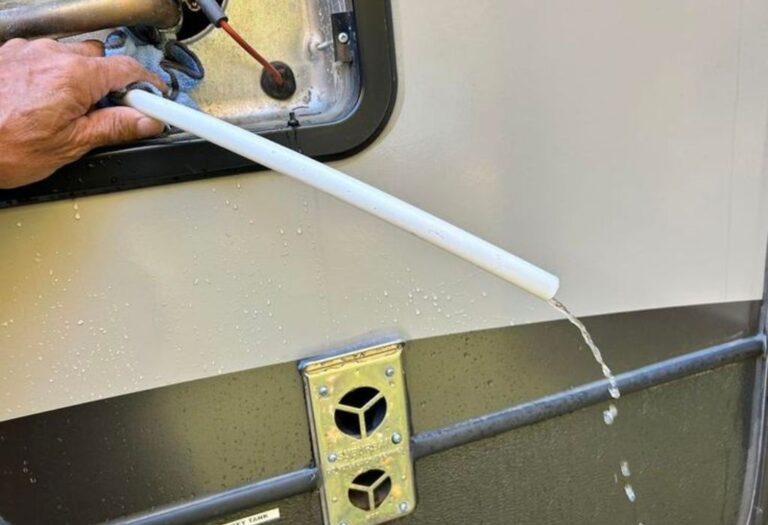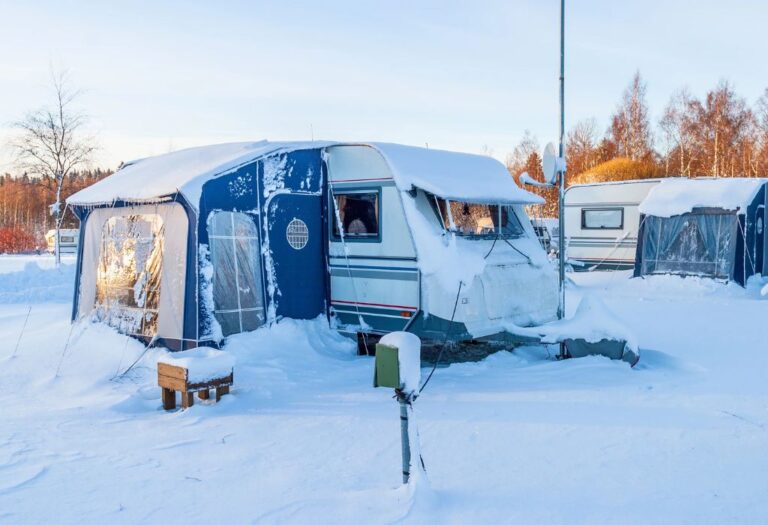What Is Black Water in an RV? Complete Guide
Every RV owner eventually faces the confusing world of RV plumbing — especially when hearing the term “black water.” It sounds mysterious and unpleasant, yet understanding it is essential for keeping your motorhome clean, safe, and odor-free. Many beginners ask the same question: What is black water in an RV, and why does it matter so much?
Black water refers to the waste that comes from your RV’s toilet. Unlike gray water from sinks or showers, it contains sewage and bacteria that require careful handling. If not managed properly, it can lead to bad odors, clogged tanks, and even health risks while traveling. According to the U.S. Environmental Protection Agency (EPA), improper wastewater disposal can contaminate soil and groundwater, posing significant health hazards to campers and wildlife.
Understanding how black water works is not just about cleanliness — it’s about comfort, safety, and environmental responsibility. Every RV has a holding tank system designed to collect and store this waste until it’s emptied at an approved dump station. Knowing how this system functions helps prevent foul smells, overflow issues, and costly maintenance mistakes.
In this comprehensive guide, you’ll learn everything about what black water is in an RV, how it differs from gray and fresh water, and the exact steps to clean, dump, and maintain your system. Whether you’re a full-time RVer or a weekend traveler, mastering your black tank routine will make every trip smoother, safer, and more enjoyable.
What Is Black Water in an RV? (Definition & Basics)
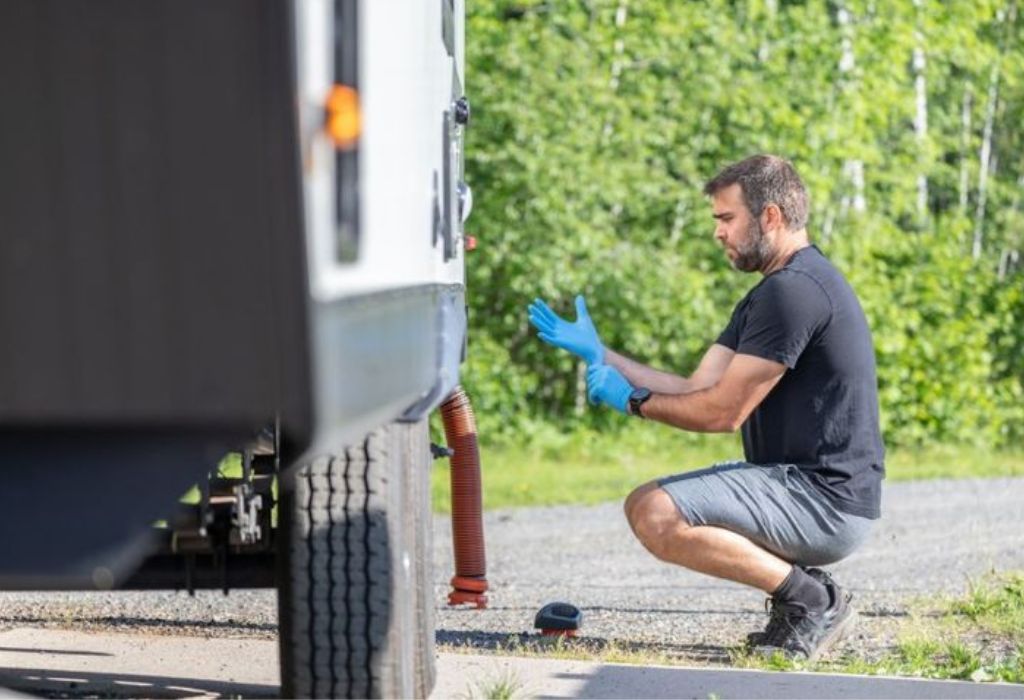
“Black water” is the term used for wastewater from the RV toilet. It contains human waste, tissue, and bacteria — making it the most critical system to manage in your RV. The black tank holds this sewage until you reach a proper dump station.
Unlike other RV systems, black water cannot simply drain onto the ground. It must be handled safely to prevent contamination and unpleasant odors. The black tank, sealed and vented, ensures the waste is stored hygienically until dumping time.
Black Water vs. Gray Water vs. Fresh Water
RV water systems are divided into three types for hygiene and functionality.
what is black water in an rv?
It’s the wastewater from the toilet containing sewage and bacteria.
how is black water different from gray water?
Gray water comes from sinks and showers, while black water carries toilet waste.
is black water hazardous?
Yes, it can carry pathogens and must be dumped at legal stations.
can black and gray water mix?
They are stored separately for hygiene reasons, even though both are wastewater.
why is it called black water?
The term “black” refers to contamination and distinguishes it from cleaner gray or fresh water.
How the RV Black Water System Works
An RV’s black water system is a closed, gravity-fed setup that collects toilet waste and directs it into a holding tank. From there, it can be flushed, treated, and emptied through a sewer hose at dump stations.
The system typically includes a toilet, black tank, vent pipe, gate valve, sensors, and dump outlet. Each part plays an important role in preventing odors and ensuring smooth operation.
Key Components and Flow Path
From the toilet flush to the dump outlet, the black water follows a direct route through pipes designed to minimize blockages.
where is the black tank located?
Usually beneath the RV floor, directly below the toilet to allow gravity flow.
what does the roof vent do?
It releases gases and equalizes pressure during dumping.
what do tank sensors measure?
They show the fill level, though residue can cause false readings.
what is a gate valve?
A sliding valve that controls waste discharge from the tank.
what is a backflush port?
A connection that allows rinsing the tank interior to remove solids.
Common Problems: Odors, Clogs, and Sensor Issues
Even with care, black tanks can develop problems over time. The most frequent ones are foul odors, clogs, and false sensor readings caused by residue buildup or poor maintenance.
Odor Sources and Quick Fixes
Bad smells usually come from dried seals, blocked vents, or poor flushing habits. A clean system with water in the bowl prevents gases from escaping.
why does my rv smell like sewage?
A dry toilet seal or blocked vent is the most common reason.
can gray water smell like black water?
Yes, gray tanks can stink too if food particles decompose.
how to stop odors fast?
Add water to the bowl, confirm vent flow, and use enzyme-based treatments.
does hot weather make odors worse?
Yes, high heat speeds up bacterial activity inside the tank.
can a cracked vent cap cause smells?
Yes, damaged vents allow gases back into the RV.
Clogs and “Pyramid Plugs”
A pyramid plug forms when solids pile directly under the toilet due to insufficient water or premature dumping.
what is a pyramid plug?
It’s a cone-shaped waste buildup beneath the toilet outlet.
how to prevent it?
Start each use with 2–3 gallons of water in the empty tank.
how to clear it?
Soften it with warm water and cleaner, then flush or use a wand.
do macerator pumps help?
Yes, they break up solids for smoother discharge.
does driving help clean the tank?
Gentle motion helps loosen waste before dumping.
Sensor Issues
Residue buildup on sensors often causes inaccurate readings.
why do sensors read full when empty?
Paper or solids bridge the contacts, giving false readings.
how to clean sensors?
Use sensor cleaner or enzyme soak, then rinse while driving.
are external sensors better?
Yes, they mount outside and avoid fouling.
can bleach fix the problem?
Avoid pure bleach; it can damage seals.
do ice cubes help clean sensors?
Slightly, but soaking and rinsing works better.
Dumping Black Water Safely (Step-by-Step)
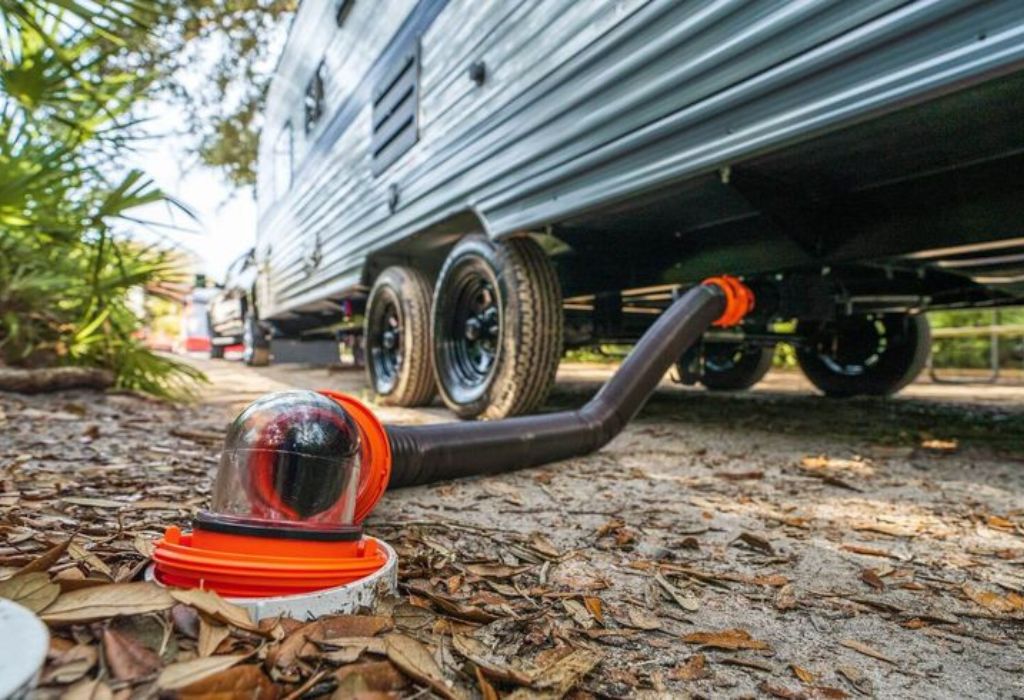
Dumping black water properly is one of the most important parts of RV ownership. It protects your health and the environment while preventing bad smells.
The Standard Dump Procedure
Dump only when the tank is at least two-thirds full for proper flow.
what valve should be opened first?
Always empty the black tank first, then use gray water to rinse the hose.
how full should it be before dumping?
Two-thirds full ensures strong flushing action.
do you need a clear elbow?
Yes, it lets you monitor waste flow.
how long should you flush?
Until the water runs clear during the rinse cycle.
can you dump anywhere?
No, always use designated RV dump stations.
Gear Checklist for a Clean Dump
Having the right equipment prevents contamination and leaks.
what hose is recommended?
A heavy-duty sewer hose with bayonet fittings.
should gloves be worn?
Yes, always use disposable or rubber gloves.
is a sewer donut needed?
Yes, many campgrounds require a sealed connection.
should you use a dedicated rinse hose?
Yes, use one marked “non-potable” for safety.
are portable totes safe for dumping?
Yes, as long as they’re emptied at an official station.
Treatments: Chemicals, Enzymes, and Eco-Friendly Options
Treatments help control odors and break down solids. The best choice depends on your travel style and climate.
Choosing the Right Treatment
Many RVers use enzyme-based or formaldehyde-free chemicals that are septic-safe and environmentally friendly.
do you always need chemicals?
Yes, especially in warm climates to prevent odor and buildup.
are enzyme treatments effective?
Yes, they use bacteria to digest waste naturally.
are formaldehyde products safe?
Some states restrict them due to wastewater impact.
how much treatment is enough?
Follow the manufacturer’s dosage for your tank size.
can you make homemade solutions?
A mild mix of dish soap and water can help but isn’t as effective long-term.
Maintenance Schedule and Best Practices
Maintaining the black tank regularly prevents clogs, odors, and expensive repairs.
Daily or Trip-Based Practices
Good habits make your tank easier to manage.
how much water to add after dumping?
Two to three gallons to prevent solid buildup.
how to protect the toilet seal?
Keep water in the bowl to block gases and maintain lubrication.
should valves stay open at full-hookup sites?
No, keeping them closed allows proper waste breakdown.
how often should the tank be rinsed?
After every dump or at least once per trip.
what kind of toilet paper should be used?
Use rapid-dissolve or RV-safe paper to prevent clogs.
Deep Cleaning and Winterization
Deep cleaning removes residue and protects the tank in cold weather.
how to deep clean a black tank?
Fill it with warm water, add cleaner, and let it soak before flushing.
what if odors persist?
Inspect the vent, seals, and confirm full rinsing.
how to winterize?
Empty, rinse, and add RV antifreeze to valves and traps.
can boiling water be poured in the tank?
Avoid it; warm water is safer for seals.
when to replace valves or seals?
Replace when leaks or stiffness appear.
Legal Rules, Environmental Risks, and Etiquette
Improper dumping can cause severe environmental damage and hefty fines.
Regulations and Environmental Impact
Dumping black water anywhere but a legal station violates environmental laws.
is it illegal to dump black water on the ground?
Yes, it’s a public health hazard.
what are the environmental risks?
Soil and water contamination harming humans and wildlife.
are chemical restrictions common?
Yes, some parks ban formaldehyde-based treatments.
where to find official dumping guidance?
Check EPA or local campground regulations.
how to report illegal dumping?
Notify campground management or local authorities.
Etiquette at Dump Stations
Being considerate at shared facilities keeps the RV community clean and respectful.
how long should dumping take?
Usually 10–15 minutes.
should hoses be rinsed on the ground?
No, always use the rinse spigot.
what to do if others are waiting?
Work efficiently and move your RV promptly.
can kids or pets be nearby?
Keep them away for safety reasons.
should hands be sanitized afterward?
Always wash thoroughly after handling sewer equipment.
Future Trends & Alternatives

Modern RVs now offer new systems that reduce or eliminate black water tanks altogether.
Composting and Cassette Options
Composting toilets and cassettes are becoming popular for off-grid travelers.
do composting toilets eliminate black tanks?
Yes, they separate liquid and solid waste and need no tank.
are cassette toilets the same?
No, they use small removable cartridges emptied manually.
do these systems save water?
Yes, most use little to no water.
what are the trade-offs?
They require frequent emptying and careful maintenance.
are these allowed everywhere?
Some parks restrict composting disposal methods, so check local rules.
Frequently Asked Questions
what is black water in an rv?
It’s the sewage waste stored in your RV’s toilet tank.
how often should the black tank be dumped?
When it’s two-thirds full or before long storage.
can gray water be used to rinse the black tank?
Some setups allow it, but always check your plumbing layout.
what prevents odors?
Adequate water, vent airflow, and proper tank treatments.
what size is a typical black tank?
Usually between 20 and 50 gallons depending on RV type.
Conclusion
Understanding what black water is in an RV helps you manage your system confidently and responsibly. Proper maintenance ensures your RV remains fresh, sanitary, and ready for travel.
By following safe dumping practices, using the right treatments, and keeping your tank well-rinsed, you’ll avoid odors, leaks, and costly repairs. Respect environmental laws, protect campground sanitation, and your RV adventures will always stay clean and worry-free.
I’m David R. Coleman, the founder, lead writer, and lifelong tool enthusiast behind GarageToolPro.com. With years of experience in automotive repair, woodworking, and home DIY projects, I created this platform to share practical tips, detailed tool reviews, and step-by-step guides that help mechanics, hobbyists, and homeowners get the job done right the first time.


